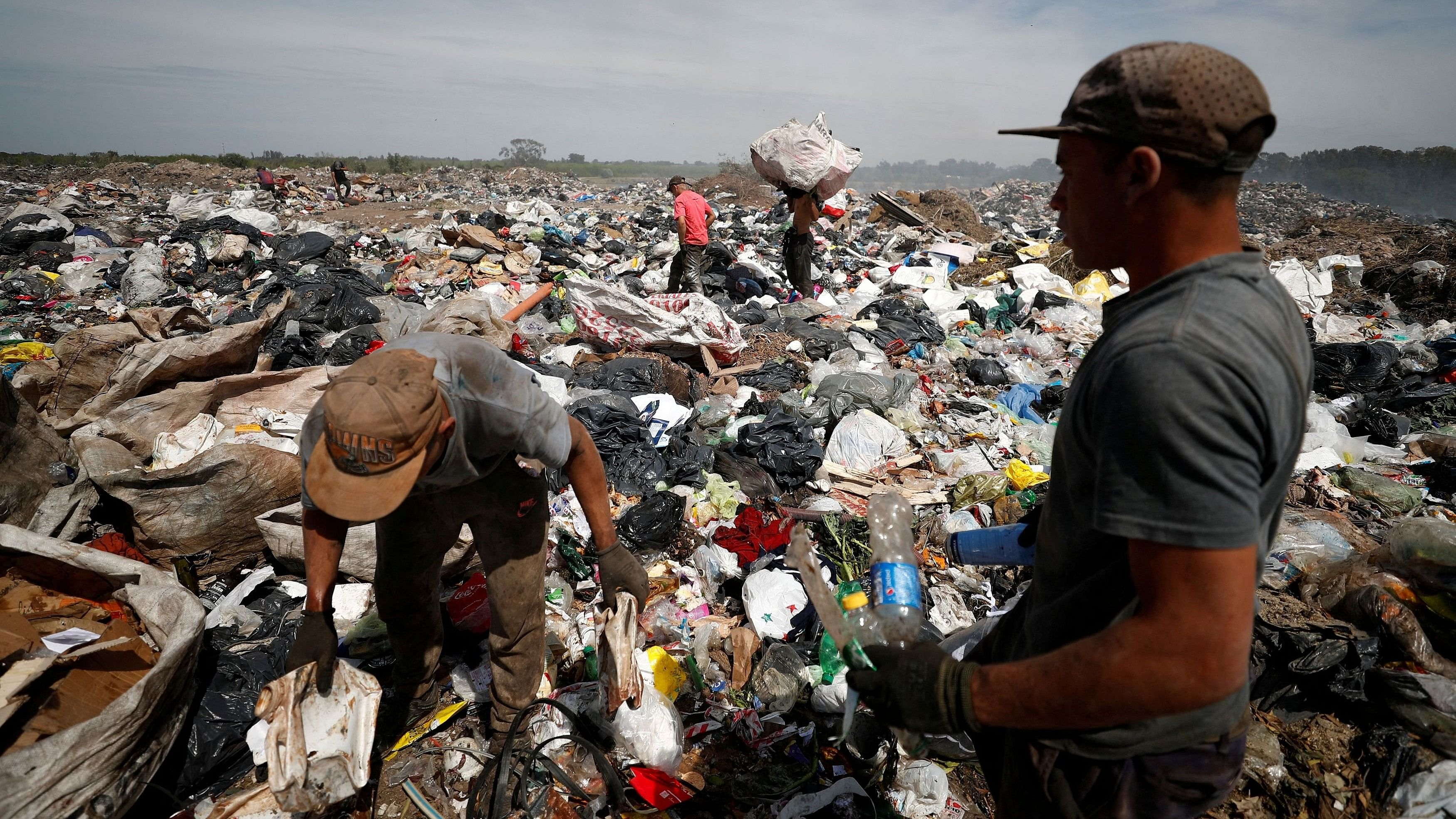
Representative image.
Credit: Reuters Photo
Bengaluru: Global electronic waste (e-waste) generation continues to outpace the recycling rate by billions of kgs, thanks to technological progress, higher consumption, limited repair options and short product life cycles, according to a new report.
The 'Global E-Waste Monitor 2024' report by the International Telecommunication Union and United Nations Institute for Training and Research said the world generated 62 million tonnes of e-waste was generated in 2022 alone, enough to fill 1.55 million trucks of 40-tonne capacity enough to form a bumper-to-bumper line encircling the equator.
"Only 22.3% of this e-waste mass was documented as formally collected and recycled in an environmentally sound manner," the report said, noting that e-waste in general was a health and environmental hazard containing toxic additives and substances like mercury.
Going by per capita e-waste generation, Europe comes first at 17.6 kg followed by Oceania (16.1 kg), Americas (14.1 kg), Asia (6.4 kg) and Africa (2.5 kg). While Europe and Oceania both had over 40% of its e-waste formallyi collected and recycled, it was 30% in the Americas, 11.8% in Asia and 0.7% in Africa.
At 30 billion kg, countries in Asia generate half of the world's e-waste but few of them have enacted legislation or established clear e-waste collection targets.
The report said that the growth rate of countries implementing e-waste policy was decelerating. "Worldwide, 81 countries (42% of all countries) have adopted e-waste policies. This falls short of the ITU target of 50% (97 countries) by 2023," the report said.
In 2010, the world generated 34 billion kg of e-waste, which has since increased by an average of 2.3 billion kg annually. The formal collection and recycling rate, however, has increased by only 0.5% from the 13.8 billion kg figure of 2010.
There was no assuring shift in technology either though the share of patent applications for e-waste management rose from 148 per million in 2010 to 787 per million in 2022.
"Most of those applications were related to technologies for cable recycling, with hardly any signs of an increase in the number of patents filed for technologies related to critical raw materials recovery," the report said.
Though rare earth minerals have unique properties crucial for future technologies, the world remains "stunningly dependent" on the production chains of a few countries.
Small equipment big concern
About one-third of the total e-waste (20 billion kg) takes the form of small equipment like toys, microwave ovens, vacuum cleaners and e-cigarettes, yet recycling rates fior the category remain very low at 12%, the study said.
Amidst the hopeful embrace of solar panels and electronic equipment to combat the climate crisis and drive digital progress, the surge in e-waste requires urgent attention,” said Nikhil Seth, Executive Director, UNITAR.
Cosmas Luckyson Zavazava, Director, ITU Telecommunication Development Bureau said the latest research shows that the global challenge posed by e-waste is only going to grow.
"With less than half of the world implementing and enforcing approaches to manage the problem, this raises the alarm for sound regulations to boost collection and recycling. The Global E-waste Monitor is the world’s foremost source for e-waste data allowing us to track progress overtime and to make critical decisions when it comes to transitioning to a circular economy for electronics,” he added.